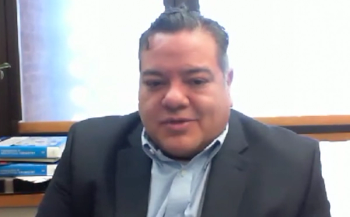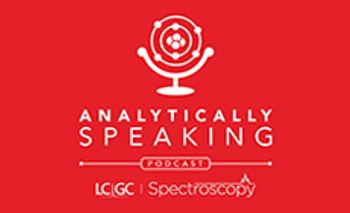
Universal Calibration: Can Models Travel Successfully Across Instruments?
Key Takeaways
- Inter-instrument variability affects spectroscopic model deployment due to hardware-induced spectral variations, necessitating calibration transfer for model accuracy.
- Sources of spectral variability include wavelength alignment errors, spectral resolution differences, and detector noise variability, impacting model performance.
Inter-instrument variability is a major obstacle in multivariate spectroscopic analysis, affecting the reliability and portability of calibration models. This tutorial addresses the theoretical and practical challenges of model transfer across instruments. It covers spectral variability sources—such as wavelength shifts, resolution differences, and line shape variations—and presents key standardization techniques including direct standardization (DS), piecewise direct standardization (PDS), and external parameter orthogonalization (EPO). We discuss the underlying mathematics of these approaches using matrix notation and highlight limitations that must be considered for reliable universal calibration.
Synopsis: Inter-instrument variability remains a major barrier to deploying spectroscopic models. This tutorial delves into the sources of spectral variability, including resolution, line shape, and wavelength alignment. Participants will explore standardization techniques and current limitations in achieving robust, physics-informed model transfer across diverse hardware platforms.
Abstract
Calibration transfer is a cornerstone requirement for the successful deployment of chemometric models in industrial spectroscopy. Models developed on one instrument often fail when applied to data from other spectrometers due to hardware-induced spectral variations. This tutorial explores the theoretical basis and implementation of universal calibration. We provide an overview of spectral distortion factors, formalize the problem using multivariate regression frameworks, and examine several transfer correction methods—DS, PDS, and EPO—in detail. Emphasis is placed on how to preserve model accuracy and robustness while reducing dependency on specific instruments. We conclude with a discussion of current limitations and propose directions for future research.
1. Introduction
Spectroscopic calibration models are widely used in fields ranging from pharmaceuticals to agriculture. Yet, their widespread adoption faces a critical bottleneck: the inability to apply a model developed on one instrument to another without significant loss in performance. This challenge arises from instrument-specific factors such as resolution differences, spectral noise, optical throughput, and detector response, which distort the acquired spectra.
To overcome this, scientists have developed calibration transfer and standardization techniques that aim to map the spectral domain of the calibration instrument, termed in the research literature as "master", primary, or parent instrument, to one or more other instruments termed as "slave", secondary, or child instruments. This tutorial provides a mathematical and conceptual framework for understanding such methods.
2. Sources of Inter-Instrument Variability
Spectral data from two nominally identical instruments can differ due to a variety of hardware (mechanical, electrical, optical) and environmental (temperature, humidity, ambient light) factors. These variations affect the success of the transfer of multivariate models trained on one instrument and dataset but applied to other instruments or even to the same instrument over time.
2.1 Wavelength Alignment Errors
Types of Variation: Wavelength misalignments arise due to factors such as mechanical tolerances and optical and grating or interferometer positioning, thermal drift affecting optical components, and differences in factory or field calibration procedures. Even minute shifts (for example, fractions of a nanometer) in the wavelength axis can lead to inconsistent alignment of absorbance or reflectance features.
Effect on Transfer: As reported in a comprehensive reference (1), small spectral shifts lead to distortion of the regression vector alignment with absorbance bands, especially when high-resolution instruments are used or when narrow-band features dominate. This results in a mismatch between the chemical signal used in the original model and the transformed input, reducing prediction accuracy. Misaligned peaks reduce correlation between spectra, thereby violating assumptions of linear transfer functions such as in DS.
Let:
2.2 Spectral Resolution and Bandwidth Differences
Types of Variation: Spectral resolution differences result from diverse slit widths, detector bandwidths, interferometer parameters, and numerical sampling intervals. Instruments with different optical configurations—for example, grating-based dispersive systems versus Fourier transform systems—naturally produce distinct spectral resolutions and line shapes.
Effect on Transfer: Broadened or narrowed peaks due to resolution differences modify the shape of features used in multivariate regression models. According to reference (1), convolution effects alter the spatial frequency content of spectra, effectively filtering or distorting regions critical to chemical quantification. These changes can severely degrade model performance if not corrected.
2.3 Detector and Noise Variability
Types of Variation: Noise differences arise from detector characteristics (for example, InGaAs vs. PbS), thermal noise, electronic circuitry, and sampling environments. Additionally, photometric scale shifts can result from optical alignment, reference standards, or lamp aging, all contributing to signal variability.
Effect on Transfer: As emphasized in reference (1), noise not only adds uncertainty to spectral intensities but also can introduce systematic errors if the signal-to-noise ratio (SNR) changes across instruments. These variations distort the variance structure exploited by PCA or PLS models, leading to erroneous latent variables and regression coefficients. Both additive and multiplicative noise components must be addressed in any robust transfer method.
Instruments differ in detector sensitivity and signal-to-noise ratios. The noise may be additive or multiplicative:
3. Calibration Transfer Techniques
A variety of algorithmic strategies have been proposed to address instrument variability. These methods seek to align slave spectra with those from the master instrument while preserving chemical information.
3.1 Direct Standardization (DS)
Introduction: DS assumes a linear transformation between slave and master spectra.
Given:
Advantages: DS offers a simple and efficient way to align spectra between instruments using a global linear transformation, enabling rapid calibration transfer when paired sample sets are available.
Limitations: DS assumes the relationship is globally linear and requires the same samples to be measured on both instruments.
3.2 Piecewise Direct Standardization (PDS)
Introduction: PDS improves DS by applying localized linear transformations across the spectrum.
Advantages: Handles local nonlinearities better than DS.
Limitations: Computationally intensive; requires overlap of sample sets.
3.3 External Parameter Orthogonalization (EPO)
Introduction: EPO is a pre-processing method that removes variability due to non-chemical effects (for example, instrument or temperature).
Advantages: Can be used even without paired sample sets if parameter differences are known.
Limitations: Requires proper estimation of and separation of orthogonal subspace.
4. Discussion and Future Research
Universal calibration remains one of the unsolved challenges in applied spectroscopy. The techniques described—DS, PDS, and EPO—offer partial solutions, but each has limitations:
- DS is vulnerable to local nonlinear distortions.
- PDS increases complexity and can overfit noise.
- EPO depends on a good estimation of nuisance parameters.
Furthermore, many transfer methods require overlapping sample sets, which may not be feasible in real-world deployment. An emerging area of research is domain adaptation using machine learning, where techniques such as transfer component analysis (TCA), canonical correlation analysis (CCA), and adversarial learning attempt to bridge domains with minimal shared samples (5–8).
Another direction involves physics-informed neural networks and synthetic data augmentation to simulate instrument variability, allowing more robust model training. Lastly, standardization protocols and instrumentation specifications (for example, resolution harmonization) remain essential to enable transferability.
Calibration transfer, as noted in reference (1), is not just a statistical problem—it is deeply tied to the physical nature of spectral data acquisition. To resolve this challenge, future research must focus on integrating physical issues (optical and mechanical), standard reference standards, statistical, and computational methods, and the instrument’s ambient environmental differences to achieve more robust, universal calibration.
References
(1) Workman, J. J. A Review of Calibration Transfer Practices and Instrument Differences in Spectroscopy. Appl. Spectrosc. 2018, 72 (3), 340–365. DOI:
(2) Feudale, R. N.; Woody, N. A.; Tan, H.; Myles, A. J.; Brown, S. D.; Ferré, J. Transfer of Multivariate Calibration Models: A Review. Chemom. Intell. Lab. Syst. 2002, 64 (2), 181–192. DOI
(3) Wang, Y.; Veltkamp, D. J.; Kowalski, B. R. Multivariate Instrument Standardization. Anal. Chem. 1991, 63 (23), 2750–2756. DOI:
(4) Roger, J. M.; Chauchard, F.; Bellon-Maurel, V. EPO–PLS External Parameter Orthogonalisation of PLS: Application to Temperature-Independent Measurement of Sugar Content of Intact Fruits. Chemom. Intell. Lab. Syst. 2003, 66 (2), 191–204.DOI:
(5) Pan, S. J.; Yang, Q. A Survey on Transfer Learning. IEEE Trans. Knowl. Data Eng. 2010, 22 (10), 1345–1359. DOI:
(6) Mishra, P.; Passos, D. Deep Calibration Transfer: Transferring Deep Learning Models between Infrared Spectroscopy Instruments. Infrared Phys. Technol. 2021, 117, 103863. DOI:
(7) Yu, Y.; Yao, M.; Huang, J.; Xiao, X. When Process Analysis Technology Meets Transfer Learning: A Model Transfer Strategy between Different Spectrometers for Quantitative Analysis. IEEE Trans. Instrum. Meas. 2024, 73, 1–19. DOI:
(8) Fan, X.; Lu, H.; Zhang, Z. Direct Calibration Transfer to Principal Components via Canonical Correlation Analysis. Chemom. Intell. Lab. Syst. 2018, 181, 21–28. DOI:
_ _ _
This article was partially constructed with the assistance of a generative AI model and has been carefully edited and reviewed for accuracy and clarity.
Newsletter
Get essential updates on the latest spectroscopy technologies, regulatory standards, and best practices—subscribe today to Spectroscopy.




